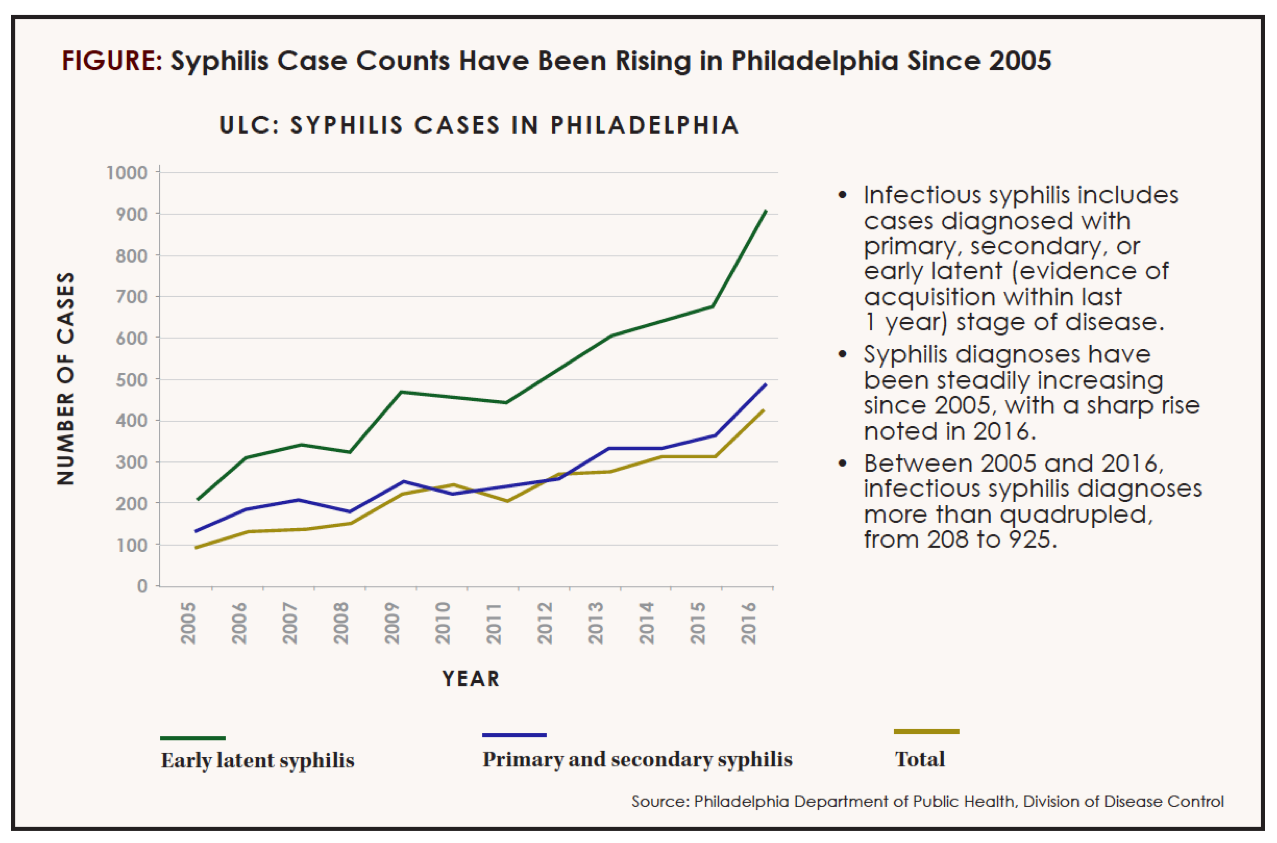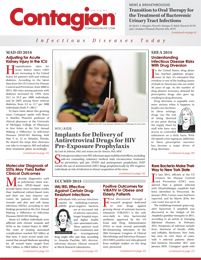Searching for the Cause of Hearing Loss in a Patient With HIV
Early diagnosis and treatment were essential to ensuring a good prognosis.
HISTORY OF THE PRESENT ILLNESS
A 48-year-old man presented to the emergency department with vertigo, headache, and hearing loss for the past 2 months. The patient reported being at his baseline health until 2 months ago, when he had symptoms of night sweats and a fever of 103°F. These symptoms were then followed by vertigo and headache. The headache was described as a constant moderate diffuse headache accompanied by left-sided hearing loss and tinnitus. At that time, the patient also noted having persistent vertigo with 2 swollen lymph nodes on the left side of his neck. Two days prior to the patient’s admission, the vertigo had progressed, and he was unable to walk without assistance. He has never had these symptoms before and noted no improvement in symptoms with any OTC medications. Although his fever and night sweats resolved spontaneously, he is suffering from daily headaches and constant vertigo with tinnitus.
PAST MEDICAL HISTORY
HIV diagnosed 2 years prior in Russia, where he was placed on tenofovir, abacavir, lopinavir, and ritonavir. CD4 was 8 at diagnosis. He denied any opportunistic infections and self-reported that his most recent CD4 count was 130 and has had undetectable viral load for the past 14 months. No other medical problems or surgeries.
MEDICATIONS
Currently taking tenofovir alafenamide, emtricitabine, elvite­gravir, cobicistat single-tablet regimen plus trimethoprim/sulfa­methoxazole 1 double-strength daily.
ALLERGIES
Penicillin, causing rash and edema.
EPIDEMIOLOGICAL HISTORY
The patient was born in Moscow, Russia, and immigrated to Philadelphia, Pennsylvania, less than 1 year ago. At that time, he was started on his current antiretroviral regimen. The patient is sexually active with his husband (HIV-negative) but did report at least 1 anonymous male partner outside this relationship in the past several months since coming to the United States. He works as an engineer and has no pets. He recently traveled to Seattle, Washington, and Houston, Texas. He denies illicit drug use and quit tobacco several years ago. He does not drink.
PHYSICAL EXAM
The patient appeared to be in acute distress secondary to severe, persistent vertigo. Vital signs were within normal limits. Neurological examination was notable for 5 beats of horizontal nystagmus on leftward gaze. He had diminished hearing on the left side. Ophthalmological exam was consistent with bilateral anterior uveitis with disc edema. Pupils were equal, round, and reactive to light and accommodation. He had no rash and no nuchal rigidity. Examination of the ear was normal. There was a small palpable lymph node on the posterior left neck, as well as a firm but nontender left preauricular lymph node. The rest of his physical exam was unremarkable.
STUDIES
On admission, complete blood count and comprehensive meta­bolic panel were unremarkable. CD4 count was 96, and HIV viral load was undetectable. His rapid plasma reagin (RPR) on admission was 1:256, and his last known RPR, 4 months prior to presentation, was negative. Treponema pallidum antibody was positive in serum. Computed tomography of the head and magnetic resonance imaging of the brain were remarkable only for a prominence of adenoid tonsils. Other infectious work-up including cryptococcal antigen and toxoplasmosis antigen was negative.
DIAGNOSTIC PROCEDURES AND RESULTS
A lumbar puncture on presentation produced cerebral spinal fluid (CSF) with 3 leukocytes and 1 red blood cell and was Venereal Disease Research Laboratory (VDRL) test—negative. CSF glucose was 49, and protein was 23. Opening pressure was normal, and CSF Gram stain and culture had no growth. The fluorescent treponemal antibody absorption (FTA-ABS) test in CSF was minimally reactive.
TREATMENT
Given his penicillin allergy, the patient was transferred to the intensive care unit for penicillin desensitization. He tolerated this well and was continued on continuous intravenous (IV) penicillin infusion 24 million U daily for 10 days and discharged home. At the time of discharge, there was significant improve­ment in the patient’s tinnitus and vertigo, though both were still present. Because of the presence of bilateral anterior uveitis with disc edema, the patient will be closely followed by an ophthalmol­ogist, as well as a neurologist and an infectious disease doctor.
DISCUSSION
Otosyphilis has been reported and described in literature since the 19th century. Both congenital and acquired syphilis can lead to the development of otosyphilis. The incidence of hearing loss in acquired syphilis has been reported in 17% of early latent, 25% of late latent, and 54% of tertiary neurosyphilis cases.1
Otosyphilis is usually a presumptive diagnosis based on posi­tive serology in patients with cochleovestibular symptoms with no other likely causes. Symptoms of otosyphilis range from acute or fluctuating hearing loss to hearing difficulty, tinnitus, vertigo, and unsteadiness. Ménière-like symptoms may also occur, although hypacusis, tinnitus, and unbalance are the most common manifestations. The occurrence of otosyphilis in early neurologic infection supports the view that primary vascular changes may be responsible for symptoms. Late syph­ilis is characterized by formation of gumma that can also cause sensorineural hearing loss, tinnitus, and vertigo. Otosyphilis can manifest as a gummatous lesion of the internal auditory canal, a labyrinthitis, or a luetic osteitis producing the typical permeative, moth-eaten appearance of the temporal bone (see FIGURE). In patients with otologic complaints, the most useful serologic test is the FTA-ABS where the positive predictive value is 11-fold greater than that of the FTA-ABS in the general population. Because of the high sensitivity of FTA-ABS in all but early primary syphilis cases, a patient with a positive test and symptoms should undergo treatment.2

With the discovery of penicillin, the syphilis disease burden dropped significantly, but it continues to remain a problem today, with a notable resurgence among men who have sex with men (MSM) (see Figure). In urban areas with a high MSM population, such as Philadelphia, public health departments are alerting providers to have a low index of suspicion to test and treat for syphilis.
Between 2005 and 2016, infectious syphilis more than quadru­pled in Philadelphia. A total of 61% of all reported infectious syphilis cases in Philadelphia were among MSM, and 59% were among men coinfected with HIV.
This case report described a patient with HIV who devel­oped vertigo, tinnitus, and hearing loss and ultimately received a diagnosis of neurosyphilis with both ocular and otic manifestations. Otosyphilis may develop at any stage of syphilis infection and has been described in isolated cases, but literature on the topic is sparse. Otosyphilis should always be considered in patients who are HIV-positive and presenting with otologic symptoms, as it has been observed that otosyphilis manifests more aggressively and at an accel­erated rate in these patients.3
Otosyphilis can cause severe otologic sequelae, especially in patients infected with HIV, where evidence suggests that the patients with VDRL >1:32 or CD4 <350 have a higher risk of central nervous system involvement. There have been several reports of otosyphilis in patients with HIV, including 1 in which the patient developed an internal auditory canal gumma.4
A case series of patients who were HIV-positive with otosyph­ilis noted that patients with the shortest duration of symptoms were the most likely to respond to treatment, while those with profound and chronic hearing loss were least likely to improve.5 However, otosyphilis is frequently a missed diagnosis because of CSF parameters frequently being within normal limits.6 This reinforces the importance of having a high index of suspicion in patients who are HIV-positive, who can present with uncommon manifestations of syphilis. Serum FTA-ABS or T pallidum micro­hemagglutination assays are used in the diagnosis, but they cannot differentiate between active and treated disease, as patients remain positive for life despite treatment. Spirochetes within the protected perilymphatic space do not always signal an acute systemic response; therefore, a negative VDRL or RPR test does not exclude the possibility of infection.
The US Centers for Disease Control and Prevention recom­mends aqueous penicillin G, 18 to 24 million U per day admin­istered as 3 to 4 million U IV every 4 hours or continuously for 10 to 14 days. It has been shown that corticosteroids, when used as an adjuvant therapy, can lead to improvement in hearing loss in some patients.7,8
Otosyphilis is a rare manifestation of neurosyphilis and must be considered in the differential diagnosis, especially in the setting of MSM and patients with HIV. Early diagnosis and treatment are essential to ensuring a good prognosis, as delayed recognition and treatment could lead to permanent tinnitus, vestibular damage, and hearing loss.
Dr. Al-Khalili is a chief fellow in clinical neurophysiology in the Department of Neurology at Drexel University College of Medicine in Philadelphia, Pennsylvania. He has completed an internship and a residency in neurology at Drexel University.
References:
- Yimtae K, Srirompotong S, Lertsukprasert K. Otosyphilis: a review of 85 cases. Otolaryngol Head Neck Surg. 2007;136(1):67-71. doi: 10.1016/j.otohns.2006.08.026.
- Hughes GB, Rutherford I. Predictive value of serologic tests for syphilis in otology. Ann Otol Rhinol Laryngol. 1986;95(3 pt 1):250-259. doi: 10.1177/000348948609500308.
- Johns DR, Tierney M, Felsenstein D. Alteration in the natural history of neurosyphilis by concurrent infection with the human immunodeficiency virus. N Engl J Med. 1987;316(25):1569-1572. doi: 10.1056/NEJM198706183162503.
- Little JP, Gardner G, Acker JD, Land MA. Otosyphilis in a patient with human immunodeficiency virus: internal auditory canal gumma. Otolaryngol Head Neck Surg. 1995;112(3):488-492.
- Mishra S, Walmsley SL, Loutfy MR, Kaul R, Logue KJ, Gold WL. Otosyphilis in HIV-coinfected individuals: a case series from Toronto, Canada. AIDS Patient Care STDS. 2008;22(3):213-219. doi: 10.1089/apc.2007.0019.
- Pasricha JM, Read TR, Street AC. Otosyphilis: a cause of hearing loss in adults with HIV. Med J Aust. 2010;193(7):421-422.
- Klemm E, Wollina U. Otosyphilis: report on six cases. J Eur Acad Dermatol Venereol. 2004;18(4):429-434. doi: 10.1111/j.1468-3083.2004.00939.x.
- Smith ME, Canalis RF. Otologic manifestations of AIDS: the otosyphilis connection. Laryngoscope. 1989;99(4):365-372. doi: 10.1288/00005537-198904000-00001.

